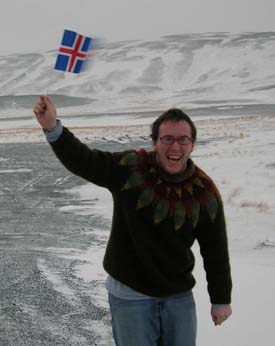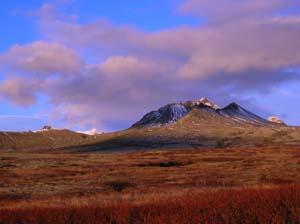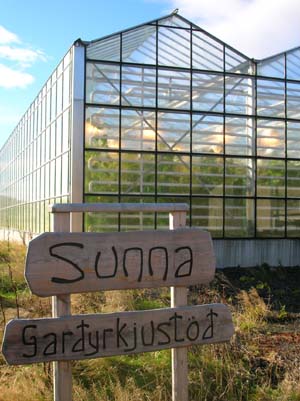From the Ground Up
A student's semester in Iceland
 After a summer of cows, chickens, and crops on a Virginia farm,
a student's semester in Iceland brings sustainability into the
forefront.
After a summer of cows, chickens, and crops on a Virginia farm,
a student's semester in Iceland brings sustainability into the
forefront.
I had no idea what to expect as I began the summer internship of what I thought was going to be nothing more than farm work. I was a biology major, still am, and probably should have been doing research in a laboratory, but my urge to farm was overwhelming. I only knew that I had always wanted to be a part of a farm and to know the feeling of growing food from the smallest of seeds.
The Walter C. Stone Memorial Internship brought me to Ceo Maidin Feirm, a small CSA (Community-Supported Agriculture) farm in Toano, Virginia. The summer brought the joys of bountiful crops, the sadness of failed crops, and more importantly, the feeling that I was affecting people in a positive, healthy way. In this, I was able to grow personally, and realized that I had discovered a new, lifelong passion. Shortly after the end of the summer, I boarded a plane in Boston and left for Iceland.
 Iceland has a pristine landscape full of huge glaciers, dramatic
waterfalls, a strong Viking heritage, and an incredible lack of
trees. It got to the point where there was nothing to do besides get
excited when we saw a tree, let alone a forest, which called for
jubilation.
Iceland has a pristine landscape full of huge glaciers, dramatic
waterfalls, a strong Viking heritage, and an incredible lack of
trees. It got to the point where there was nothing to do besides get
excited when we saw a tree, let alone a forest, which called for
jubilation.
I had found out about the Center for Ecological Living and Learning (CELL) study abroad program through my roommate, and at first only wanted to go because I wanted to go somewhere 'different' and my father had said repeatedly how unique Iceland was from any other place he had been. After the summer internship, I had developed a better sense of what sustainability was, particularly in sustainable farming, but spending three months in an Icelandic eco-village studying sustainability was bound to be life changing.
 My study abroad program was in a small eco-village named Sólheimar,
or "home of the sun" in Icelandic, with a population of about
100. Through experiential and service learning, our group studied the
sustainable practices Iceland makes use of, including their impressive
'75% of energy coming from renewable resources' figure. Seeing houses
and buildings constructed of wood cut from sustainable forests,
insulated with Icelandic sheep's wool, roofed with sod, and powered
with wind, solar, geothermal, and hydropower energy was not out of the
ordinary. We each participated in a research project, all having a real
environmental impact on Sólheimar. No surprise the project I chose
dealt with farming.
My study abroad program was in a small eco-village named Sólheimar,
or "home of the sun" in Icelandic, with a population of about
100. Through experiential and service learning, our group studied the
sustainable practices Iceland makes use of, including their impressive
'75% of energy coming from renewable resources' figure. Seeing houses
and buildings constructed of wood cut from sustainable forests,
insulated with Icelandic sheep's wool, roofed with sod, and powered
with wind, solar, geothermal, and hydropower energy was not out of the
ordinary. We each participated in a research project, all having a real
environmental impact on Sólheimar. No surprise the project I chose
dealt with farming.
I can see now that both experiences came into my life for a reason, and I have pursued these new studies with a fiery fervor. With this passion comes the comfort of knowing that no matter how hot summer days in Virginia may get, or how much geothermal heat you need to keep the tomatoes warm in a greenhouse in Iceland, I am a part of something bigger than myself.
by Justin Butterworth, '09














